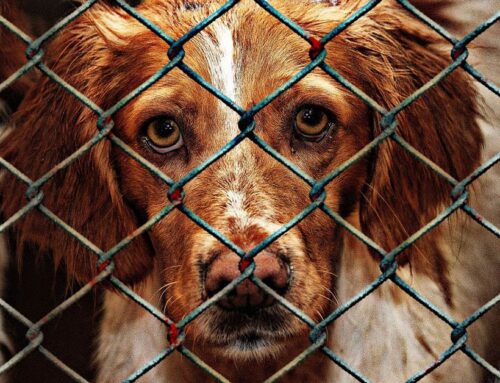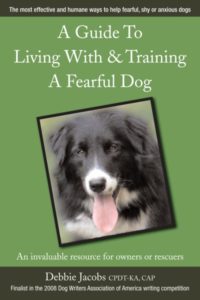In order to help a scared dog, and this is true whether the dog is scared and freezes up, flees or becomes aggressive, you must have an understanding of these concepts. Fortunately they don’t require a degree in rocket science.
Counter conditioning-by pairing something a dog feels good about, with something it doesn’t feel so good about you can change how the dog feels about the not-so-good thing.
Desensitization-By exposing a dog to things that it does not feel good about, in small doses, the dog might be able to tolerate them. You need to pay attention to ‘how much’ the dog can tolerate. If you go too fast with too much you may end up making matter worse not better. The idea is that you can slowly began to increase the exposure to the scary thing and have it still be ok. It might be having something closer, having more of it, or having it around longer.
Triggers-These are the things or situations that scare your dog. There may just be one thing, or there may be many. For dogs with many triggers you need to be careful not to expose them to too many triggers at once. Your dog may be able to focus and learn when carefully exposed to one trigger, but not when in the presence of two or three.
Threshold- There are lines, not very clearly drawn and which may change (and you want them to change) that separate when your dog is ok, sort of ok, not ok, or totally freaked out. At one of these lines your dog can still focus on you and think. If your dog can think, it can learn. If your dog crosses one of these lines and goes from being able to think to just reacting, you’ve reached its threshold. In theory you want to keep your dog just below its threshold to its triggers in order to have the best success in helping them to learn to be comfortable with them.
Patricia McConnell’s The Cautious Canine is an easy read and explains these ideas and how to use them to help your dog.





